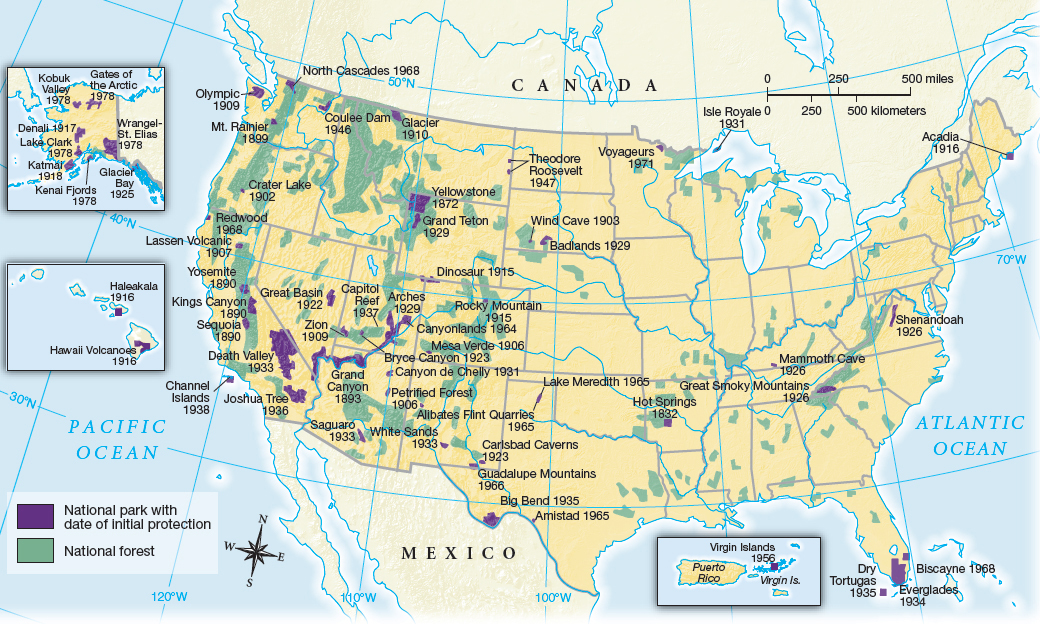Roosevelt and Conservation
Printed Page 624
Section Chronology
In the area of conservation, Roosevelt proved indisputably ahead of his time. When he took office, some 43 million acres of forestland remained as government reserves. He more than quadrupled that number to 194 million acres. To conserve natural resources, he fought western cattle barons, lumber kings, mining interests, and powerful leaders in Congress, including Speaker of the House Joseph Cannon, who vowed to spend “not one cent for scenery.”
As the first president to have lived and worked in the West, Roosevelt came to the White House convinced of the need for better management of the nation’s rivers and forests as well as the preservation of wildlife and wilderness. During his presidency, he placed the nation’s conservation policy in the hands of scientifically trained experts like his chief forester, Gifford Pinchot. Pinchot preached conservation — the efficient use of natural resources. Willing to permit grazing, lumbering, and the development of hydroelectric power, conservationists fought private interests only when they felt business acted irresponsibly or threatened to monopolize water and electric power. Preservationists like John Muir, founder of the Sierra Club, believed that the wilderness needed to be protected. Roosevelt — a fervent Darwinian naturalist and an (overly) enthusiastic game hunter, a conservationist who built big dams, and a preservationist who saved the redwoods — aimed to have it both ways.
In 1907, Congress attempted to put the brakes on Roosevelt’s conservation program by passing a law limiting his power to create forest reserves in six western states. In the days leading up to the law’s enactment, Roosevelt feverishly created twenty-one new reserves and enlarged eleven more, saving 16 million acres from development. Once again, Roosevelt had outwitted his adversaries. “Opponents of the forest service turned handsprings in their wrath,” he wrote, “but the threats … were really only a tribute to the efficiency of our action.” Worried that private utilities were gobbling up waterpower sites and creating a monopoly of hydroelectric power, he connived with Pinchot to withdraw 2,565 power sites from private use by designating them “ranger stations.” Firm in his commitment to wild America, Roosevelt proved willing to stretch the law when it served his ends. His legacy is more than 234 million acres of American wilderness saved for posterity (Map 21.1).
